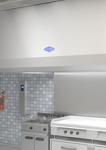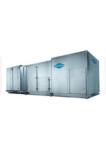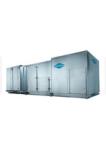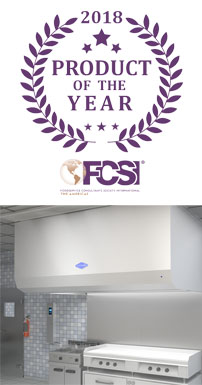Understanding Air Quality
Selecting The Right Solution
Air quality is a major concern in many large cities especially as mixed-use development continues to increase due to market pressures for sustainability and the desire for greater housing variety and density. As a result, many commercial kitchens will require pollution control equipment in their exhaust systems to comply with the increasing demands of environmental control agencies. In 2016, the New York City Department of Environmental Protection implemented a rule that requires a pollution control device to remove 75% of the mass created in the exhaust plume during the cooking process for facilities that cook more than 875lbs of protein per week on a charbroiler.
Basic Facts About Smoke
Smoke abatement equipment must remove smoke particulate generated by commercial cooking equipment from the air stream. The amount of smoke discharging from a kitchen exhaust duct is measured in terms of its density, referred to as opacity - the degree to which emissions block light. A 100% opacity level would be solid black and 0% would be perfectly clear. Control agencies that have adopted smoke pollution ordinances are requiring an opacity level of no more than 20%, which is a very light blue smoke. Alternatively, some cities have determined that measuring the amount of mass removed is a better method.
Thus, there are now multiple methods to determine the efficiency of a pollution control unit.
- How well does it reduce the opacity level of a given air stream? Less than 20% is acceptable
- How much material does the device remove from the exhaust plume as percentage based on a EPA method 5 test
Basic Facts About Odor
Cooking odors (molecules) generated by the cooking of animal and vegetable matter result in an extremely complex mixture of reactive organic gases. A small percentage of these odors may be found in the grease particles but the vast majority of the odor exist separately in the air stream as vapor. Gaylord Industries offers charcoal, odor-oxidant, or charcoal/odor oxidant blend as the standard method and spray odor control as an option. Neither of these methods is 100% effective at removing all the odor so it is recommended that the discharge location for the exhaust system be placed in the least offensive location possible to minimize issues from odor.
Gaylord Industries has manufactured Pollution Control Equipment specifically designed for commercial kitchen exhaust systems since the early 1970’s, longer than any other manufacturer. This experience has made us acutely aware of the special engineering, operational, and maintenance considerations to ensure the most efficient and cost-effective design for your foodservice operation.










